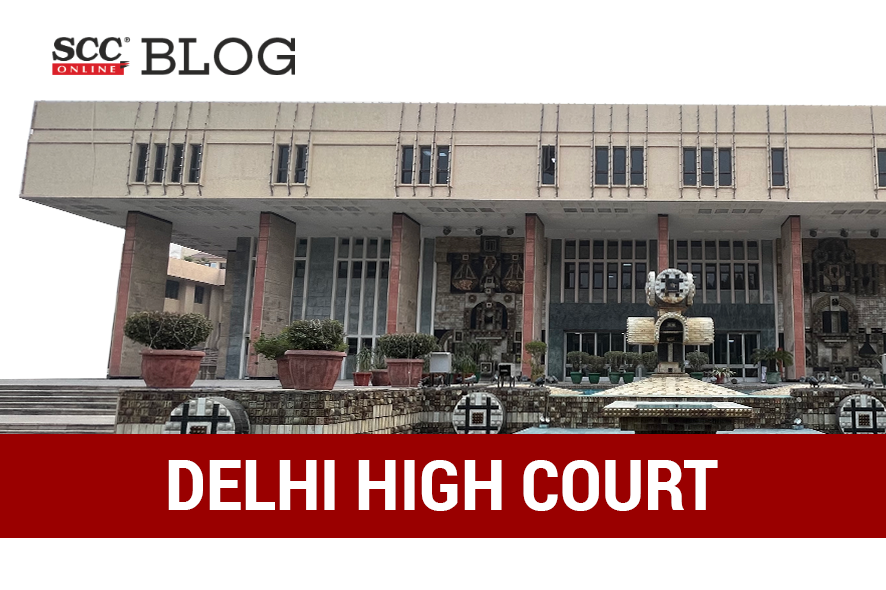Delhi High Court: In a trade mark infringement suit between ‘NOVARTIS’ and ‘NOVAEGIS’, a Single Judge Bench of C. Hari Shankar, J. held that a prima facie case of deceptive similarity between the marks of the plaintiffs and the defendant was made out and thus, granted ad-interim injunction in favour of ‘NOVARTIS’.
Background
The plaintiffs claimed to have adopted the name ‘NOVARTIS’ as their house mark/company name/ trade name in 1996. The mark ‘NOVARTIS’ figures not only on the medicines manufactured by the plaintiff, but also on the buildings, offices, packaging products, promotional materials, stationery and other goods and services belonging to the plaintiffs or in which plaintiffs were engaged. The earliest registration possessed by the plaintiffs was in Class 5 and therefore dated to 1996.
The plaintiffs were aggrieved by the use, by the defendant of the mark ‘NOVARTIS’ for which the defendant had sought registration under Class 35 which dealt with retailing, wholesaling, import and export of pharmaceuticals, advertising, business management, business administration, office functions. The plaintiffs and the defendant both use the disputed mark on the packets and strips on which they sell their pharmaceutical products.
Analysis, Law, and Decision
The Court opined that ‘NOVAEGIS’ was phonetically identical to ‘NOVARTIS’, when tested from the point of view of a customer of average intelligence and imperfect recollection. Thus, the Court stated that “it was difficult for this Court, at a prima facie stage, to believe that the phonetic similarity between the two marks was merely coincidental and that the defendant was an innocent adopter of the impugned mark”.
The Court noted that “both marks were written in bluish green, with the difference in colour being too minor to pass muster and both the marks were preceded by a pictorial symbol which, given the size of the marks as would be reflected on the packages on which the marks figure, were also similar”, therefore, the Court opined that this element of doubt, was sufficient to make out a case of ‘confusing’ or ‘deceptive’ similarity.
The Court further noted that a comparison of the recital on the website of the defendants, with the recital on the website of the plaintiffs, revealed that the defendants had lifted more than one catchphrase. Therefore, the defendant was conscious of the plaintiffs’ mark and thus, intentionally coined a mark which was phonetically and visually similar to the registered mark of the plaintiffs and used taglines and catchphrases on its website which were similar to those used by the plaintiffs.
The Court was also in agreement with the submission of the counsel for the plaintiff that “if both the marks were compared, then they were found to be structurally similar as they use a similar colour scheme and the defendant could not have visualised or created the impugned ‘NOVAEGIS’ mark without having before it, the plaintiffs ‘NOVARTIS’ mark”.
The Court held that the present case clearly satisfied the test envisaged under Section 29(2) of the Trade Marks Act, 1999 inasmuch as
-
‘NOVARTIS’ was the registered trade mark of the plaintiff;
-
The defendant uses the impugned ‘NOVAEGIS’ mark in the course of the trade;
-
‘NOVAEGIS’ satisfied the definition of ‘mark’ as contained in Section 2(m) of the Trade Marks Act;
-
The defendant’s mark ‘NOVAEGIS’ was phonetically and visually similar to the registered ‘NOVARTIS’ mark of the plaintiff;
-
The goods in respect of which the plaintiff and defendant use the rival marks were identical goods, as both were used for pharmaceutical products, and
-
The use, by the defendant, of the mark was likely to cause confusion in the minds of the public, or, at the very least, to induce a customer of average intelligence and imperfect recollection into believing an association between the defendant’s mark and the mark of the plaintiffs.
The Court relied on Munday v. Carey, (1905) 22 RPC 273, wherein it was held that “where there was an intent to confuse and the mark of the defendant was a copy of the mark of the plaintiff, one had to concentrate more on similarities rather than on dis-similarities”. The Court also relied on Slazenger & Sons. v. Feltham & Co., (1889) 6 RPC 531, wherein it was held that “where the defendant had strained every nerve to make his mark as similar to the plaintiff’s mark as would deceive the consumer, the Court would presume that the attempt was successful rather than unsuccessful”. The Court held that the principles enunciated in these two cases would be applicable in the present case.
The Court held that a prima facie case of deceptive similarity between the marks of the plaintiff and the defendant was, therefore, made out. Further, the Court held that within the meaning of Section 29(2)(b), a prima facie case of infringement was also made out. The Court relied on Laxmikant V. Patel v. Chetanbhai Shah, (2002) 3 SCC 65 and Midas Hygiene Industries (P) Ltd v. Sudhir Bhatia, (2004) 3 SCC 90, wherein the Supreme Court held that an injunction must follow where such a prima facie case existed.
Thus, the Court granted ad-interim injunction in favour of ‘NOVARTIS’ and held that till the next date of hearing, the defendant, and all others acting on its behalf, should stand restrained from using the mark ‘NOVAEGIS’ or in any form or manner, whether as part of its brand name or trade name or as a part of corporate name which was displayed on the products of the defendant or on its website, or otherwise.
The matter would next be listed on 24-4-2023.
[Novartis AG v. Novaegis (India) (P) Ltd., 2023 SCC OnLine Del 1123, decided on 20-2-2023]
Advocates who appeared in this case:
For the Plaintiffs: Advocate Mamta Rani Jha;
Advocate Abhijeet Rastogi;
Advocate Mamta Bhadu;
Advocate Abhay Tandon.
For the Defendant: Advocate Jayant Kumar;
*Order By: Justice C. Hari Shankar.







